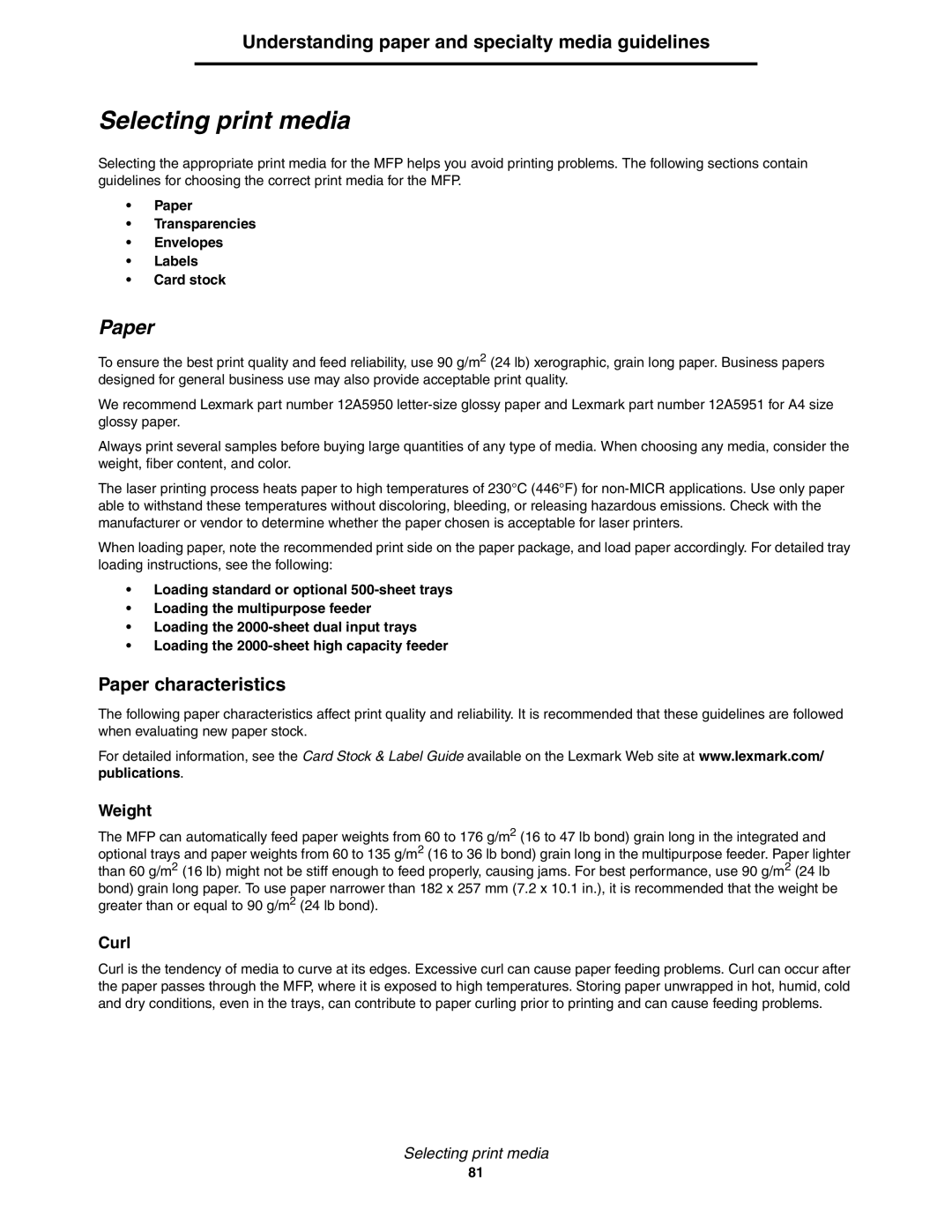Understanding paper and specialty media guidelines
Selecting print media
Selecting the appropriate print media for the MFP helps you avoid printing problems. The following sections contain guidelines for choosing the correct print media for the MFP.
•Paper
•Transparencies
•Envelopes
•Labels
•Card stock
Paper
To ensure the best print quality and feed reliability, use 90 g/m2 (24 lb) xerographic, grain long paper. Business papers designed for general business use may also provide acceptable print quality.
We recommend Lexmark part number 12A5950
Always print several samples before buying large quantities of any type of media. When choosing any media, consider the weight, fiber content, and color.
The laser printing process heats paper to high temperatures of 230°C (446°F) for
When loading paper, note the recommended print side on the paper package, and load paper accordingly. For detailed tray loading instructions, see the following:
•Loading standard or optional
•Loading the multipurpose feeder
•Loading the
•Loading the
Paper characteristics
The following paper characteristics affect print quality and reliability. It is recommended that these guidelines are followed when evaluating new paper stock.
For detailed information, see the Card Stock & Label Guide available on the Lexmark Web site at www.lexmark.com/ publications.
Weight
The MFP can automatically feed paper weights from 60 to 176 g/m2 (16 to 47 lb bond) grain long in the integrated and optional trays and paper weights from 60 to 135 g/m2 (16 to 36 lb bond) grain long in the multipurpose feeder. Paper lighter than 60 g/m2 (16 lb) might not be stiff enough to feed properly, causing jams. For best performance, use 90 g/m2 (24 lb bond) grain long paper. To use paper narrower than 182 x 257 mm (7.2 x 10.1 in.), it is recommended that the weight be greater than or equal to 90 g/m2 (24 lb bond).
Curl
Curl is the tendency of media to curve at its edges. Excessive curl can cause paper feeding problems. Curl can occur after the paper passes through the MFP, where it is exposed to high temperatures. Storing paper unwrapped in hot, humid, cold and dry conditions, even in the trays, can contribute to paper curling prior to printing and can cause feeding problems.
Selecting print media
81
